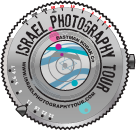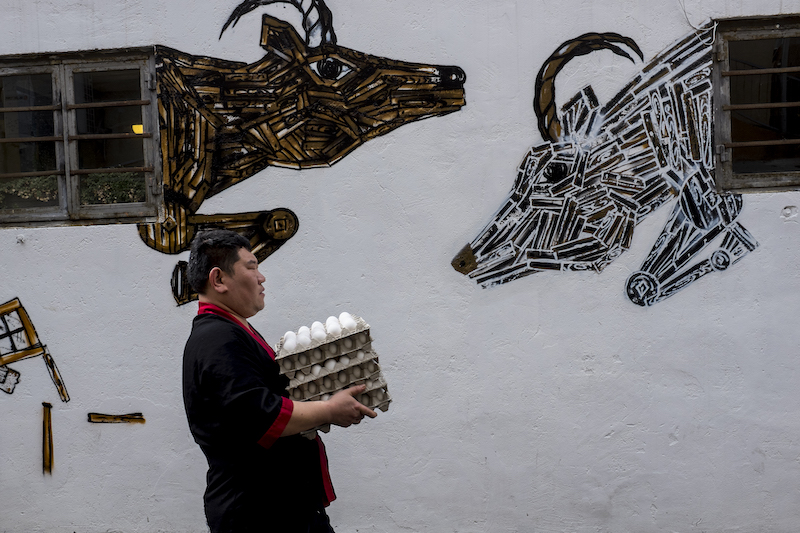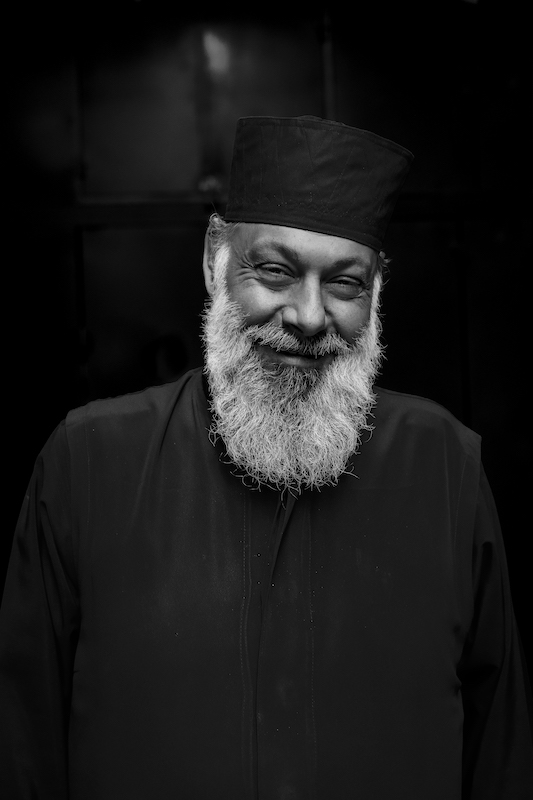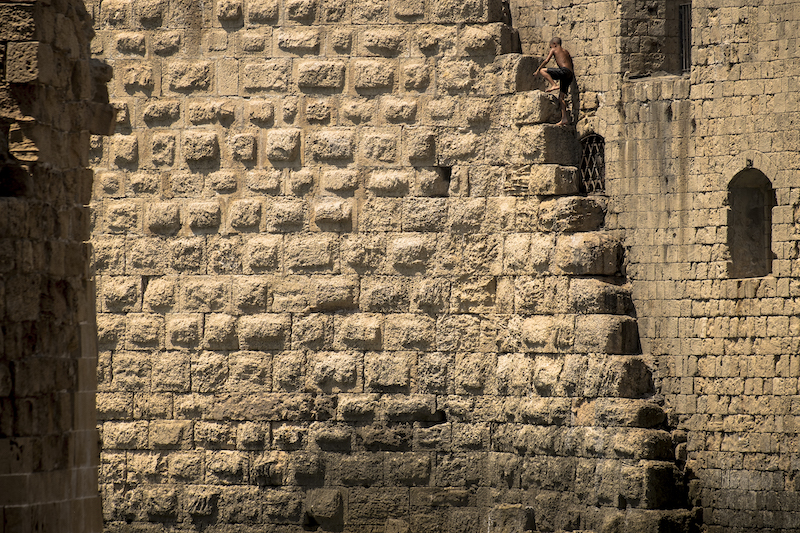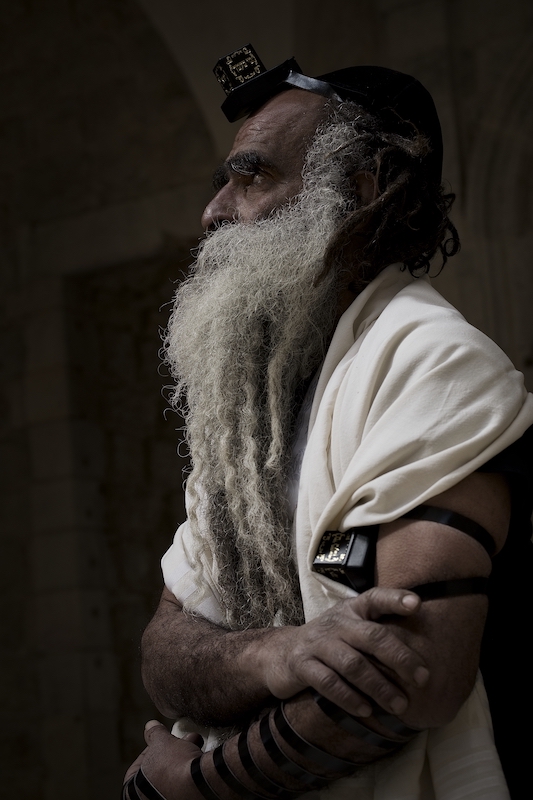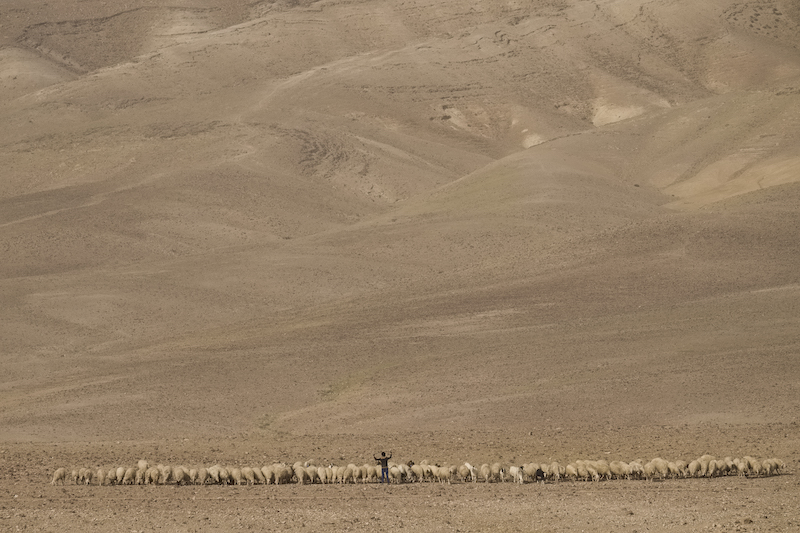Israel Photography Tour – Israel photo tours, walks, workshops and photographic vacations
Israel Photography Tour itineraries comprising of photo tours, walks, workshops and photographic vacations cover just about every photographer’s needs with regards to preferred subjects, skill levels, locations and tour durations. From street photography in Tel Aviv, discovering ancient architecture in Jerusalem, shooting environmental portraits in Acre, seascapes of the beautiful Roman ruins on the beaches of Caesarea, remnants of the Yom Kippur war in the Golan Heights, capturing the essence of spirituality in the northern town of Tzfat to photographing stunning landscapes at the Dead Sea and Negev desert, we are confident that your time spent in Israel with us will be a productive and educational photographic experience, and a highlight of your trip. For the first time visitor, Israel will surprise, inspire, and ultimately captivate you. Needless to say, many of our clients are repeat guests, such is the desire to return time and again to this beautiful land.
As we have a variety of photography itineraries in Israel and also through our international workshops, not including our customised tours, we have listed all of our photography experiences on this one page so that you can see what we offer and plan accordingly. Starting with our half day and full day private photo tours, we offer our regular photo walks in Tel Aviv and Jerusalem, as well as locations further afield, where we use a private vehicle to get to and from each location as well as suggest options for accommodation for multi-day tours. Another option is leave it up to us to design you the photographic experience of a lifetime!
Tel Aviv & Jaffa Photography Tour
Also known as the White City, Tel Aviv, Israel’s commercial hub, is a melting pot of people from just about all over the world. Enjoying a secular and care-free lifestyle, the residents of Tel Aviv like to party, and are a stark contrast to the conservative and ultra-orthodox neighbourhoods of Jerusalem. First impressions surprise the visitor with it’s ultra-modern skyscrapers and high-rise apartments lining the Ayalon freeway. Venturing towards the beaches reveals beautiful architecture dating back to the time of the British Mandate, while extensive German architecture from the Bauhaus movement turned Tel Aviv into a UNESCO World Heritage Site. Our 3.5 hour Tel Aviv Photo Tour is a pleasant walk through some of the city’s most quaint and trendy neighbourhoods, including the Florentin section, where Street Art covered facades are found throughout it’s narrow streets. Located nearby is the trendy Neve Tzedek neighbourhood, with it’s boutique stores, cafes and restaurants scattered through it’s residential area of beautifully restored homes from the days of the British Mandate. Likewise, urban decay around the backstreets can offer a nice juxtaposition to newly-developed high rises.
Beach life is a major reason for tourists to visit, but it’s the local residents and their love of outdoor activities that make Tel Aviv quite different from other coastal towns in Israel. From beach gyms at Frishman beach, sailing and surfing at Gordon beach to the drummers jamming on Drummers beach, Tel Aviv is undoubtedly a fun city to explore. Markets are popular in Tel Aviv as well. From the Levinsky spice market, to the craft market at Nachlaot Benyamin, or the Carmel market between Allenby street and the sea, the afternoon in particular is especially photogenic when the narrow alleys of the markets create deep shadows and saturated colours – perfect for street photographers.
Jaffa has always been a favourite location for photography, due to it’s mix of interesting faces and urban decay. Dating back thousands of years to the times of ancient Egypt and beyond, Jaffa is most famous for it’s association with the Biblical stories of Jonah, Soloman and Saint Peter. Built on a 40m high ridge, Jaffa was of significant military importance over the years. Due to this, Jaffa has had a tumultuous history, as has many other strategic sites in Israel. The quaint port of Jaffa is the oldest known port in the world, and is most notable for being the port where Jonah set off on his Biblical adventure story known as Jonah and the whale. We have also designed a tour in the afternoon that ends at sunset for photographers wanting to take advantage of the beautiful afternoon light illuminating the old stones in Jaffa before the sun sets over the Mediterranean.
Jerusalem Photography Tour
Our 6 hour Jerusalem photography tour was our first photo tour itinerary and is still our most popular. Jerusalem draws travellers in from all corners of the globe due to it’s importance in spirituality, history and culture. Dating back to around 3500 BC, the first human settlements occurred during the early Bronze Age. With so many sites associated with the Bible, Jerusalem is of major importance to the 3 monotheistic faiths. Being the city in which King David and King Solomon ruled, and the site of what is now the Temple Mount where Abraham was told by G-D to sacrifice his son Isaac, the site of the First and Second Temples, and other numerous sites relating to prophets and the Bible, Jerusalem is the holiest and most important city in the Jewish faith. Since the Second Temple’s destruction, the last remaining section known as the Western Wall is Judaism’s most holy site, and brings millions of Jews here each year to pray by it’s ancient stones.
For Christians, the Mount of Olives, churches along the route of the Way of the Cross, and the narrow streets associated with Jesus are the reason that pilgrims flock to the Christian Quarter of the Old City year-round. Of significant importance is the Church of the Holy Sepulchre. Built in 335 AD, it is the site where followers believe Jesus’ crucifixion and resurrection occured, and is the holiest site to Christians. During Holy Week – the week preceding Easter, the Old City of Jerusalem transforms into a sea of pilgrims from around the globe that come to visit the Holy Land and retrace the footsteps of Jesus on his last days. With celebrations of his entry into Jerusalem signified on Palm Sunday, to celebrating the Passion of Christ on Good Friday, and the amazing scenes of the Holy Fire on Holy Saturday, this amazing spectacle is part of our Israel Holy Week Photo Workshop and is truly a sight to behold.
Jerusalem is also of major importance to the followers of Islam, where the Temple Mount is the third holiest site to Muslims, after Mecca and Medina in Saudi Arabia. Built in 691 AD, the Dome of the Rock with it’s shimmering gold dome is where Muslims believe the Prophet Muhammed ascended to heaven on a winged beast. The Dome of the Rock and Al-Aqsa Mosque were built directly on top of the Second Temple, and because of it’s religious and historical implications, has been the cause of conflict for centuries. With a long and turbulent history, Jerusalem has been captured and recaptured dozens of times and destroyed twice. Great rulers and empires have laid claim to this city. From Alexander the Great, the Egyptians, Romans, Crusaders, Persians, Mamelukes, Islamists, Turks and British Empires have all conquered and besieged the city. During the 1967 war, and against all odds, Israeli paratroopers entered the Old City and reunified Jerusalem from the Jordanian army. Visiting Jerusalem is quite literally, a journey through the past.
Amongst the ancient sites and through it’s stone streets where kings and prophets have walked, photographers will find that Jerusalem is not only a must-see for architectural photography. Due to it’s diversity of people that originated from all over the world and settled here, and because of such importance given to spirituality, the street photographer and enthusiasts of environmental portraits will surely be in their element here. There are not many places on earth that we can think of that contain such a concentration of interesting faces, dressed in traditional and religious clothing, and with such beautiful light and contextual backgrounds.
Northern shore – Acco [Acre], Caesarea & Haifa Photography Tour
Heading north from Tel Aviv are four locations that we love to photograph – all quite different from each other, yet all located along the northern shores of the Mediterranean. For photographer’s whose interest lies in dramatic seascapes, we would first head up to the northern border with Lebanon to visit the sea grottoes of Rosh Hanikra. This is Israel’s most northern coastal border. The unusual geological formations of white chalk cliffs against the blue sea is quite dramatic and of special interest to landscape photographers. Taking the short ride down by cable car reveals the sea caves, created over millennia by the force of the sea and rainwater. The sound of the waves pounding together with the views from within the caves looking out to the sea are quite an experience. Also of interest is the tunnel that was to contain a rail link between Cairo to Haifa to Beirut that was built by the British, but was ultimately sabotaged by the Israeli forces to detract the Arab armies from bringing in arms and supplies after the start of the War of Independence in 1947.
Returning back south, we make a stop in Haifa to visit the beautiful Bahai Gardens on Mount Carmel. Undoubtedly Haifa’s most distinct icon, this UNESCO World Heritage site comprises of a series of 19 terraces climbing the slope of Mount Carmel from the German Colony at it’s base. In the middle stands the gold-domed shrine of the Bab, the prophet and founder of the Bahai faith. The gardens themselves are immaculate, where each blade of grass seems to be measured before being trimmed. Flower beds, ponds and sculptures align it’s 600 steps, and the panoramic views from the top stretch out over Haifa, the sea and Galilee hills. Continuing south, we arrive to the port town of Acre. Known locally as Acco, it has been continuously inhabited for 4,000 years, when expansion began during the Hellenistic period before the Crusaders ruled, before falling under the hands of the Ottoman Empire. Like many strategic points in Israel, it has had it’s share of violent takeovers, and has turned into a town full of interesting sights and culture. Today Acco is home to the coexistence of Jews, Muslims and Christians. The Old City is a UNESCO World Heritage Site, and is circled by the impressive fortified walls built by the Ottomans, and protecting the city from outside invaders and the forces of the sea. Equally impressive are the underground tunnels built by the Knight’s Templar. This town has to be one of our favourites in Israel due to such a diversity of subjects to capture in a relatively small area. Photography is so enjoyable thanks to the mix of fabulous architecture, a labyrinth of narrow alleyways and very hospitable people. The simple menu of 4 different choices at Hummus Said is a delight to visit for lunch. Located in the heart of the market, this restaurant is commonly thought to have the best hummus in the Middle East, and is well worth the experience.
After spending time enjoying the excellent photo opportunities in Acco, we head further south to the ancient ruins at Caesarea. Israel’s most visited tourist attraction, with more than 900,000 visitors per year, the antiquities park of Caesarea is a blend of ancient harbour ruins, stunning beaches and some of Israel’s most beautiful and expensive residences. Around 22 BC, King Herod built the port here due to it’s location in the centre of the country, and convenient access routes. Today, the antiquities park has been restored to one of Israel’s most beautiful national parks. While structures such as the amphitheater have been renovated and are now used for open-air concerts, the area between the fortified walls and the sea is littered with ruins and crumbling structures. During the late afternoon, as Golden hour approaches, great photo opportunities on the beaches can be had. The warm light illuminating the ruins that succumbed to erosion by the sea, Roman pillars scattered in the surf and waves breaking on the ruins make for fantastic shots for lovers of architectural photography and seascapes. Rushing to capture the sunset, we take a short drive to photograph the last light on the Aqueduct, which is located right on the beach. Built by Herod, and then extended by Hadrian, this section of the aqueduct is in remarkable shape considering it’s close proximity to the sea. Israeli’s enjoying picnics, smoking Nargillah’s, and the occasional wedding shoot can be seen here. We love to photograph the locals enjoying time with friends and family, under the arches of the aqueduct as the sun sets. Some of our favourite silhouettes of people between the ruins and against a saturated sky can be had here.
These 4 locations can be covered in a single day on a Full day tour to the northern shore and make for an amazing day out with your camera, although we also love to visit these sites as part of our 3 Day Israel photo tour. Even better with time permitting, is staying overnight in Haifa on a customised tour to take advantage of the best light available and at a more relaxed pace.
The Galilee and the Golan Heights Photography Tour
The fertile regions in northern Israel comprise of the Galilee that stretches from Beit Shean, to the western coastal plains, to the western shores of the Sea of Galilee and up to the Lebanese border. With a cooler climate due to it’s elevation and mountainous landscapes, some visitors are surprised that we even get snow in this part of Israel. Even in the warmer months you can see snow on Mount Hermon in the Golan Heights. Famous for the story of Jesus Christ, subsequently the Galilee is a highlight for visiting Christian pilgrims. Centred around the Sea of Galilee, Israel’s largest freshwater lake, many tourists come to visit especially during the summer months to cool off in the cooler climate and bathe in the lakes and natural springs. The main town by the Sea of Galilee is called Tiberias and is also the site of many important Jewish tombs such as the philosopher and physician Maimonides, also known as Rambam. One of our favourite sites for photography on the shores of the Jordan river is Yardenit, a popular baptism site for Christian pilgrims. Watching these scenes along the lush green river banks can reward the photographer some memorable images of the faithful. During the late afternoon, you can capture the bright red domes of the Greek Orthodox Church by the shores of the Sea of Galilee, and with some luck, reflections of cloud formations over the lake at sunset.
Many of our guests are intrigued by the Holy Town of Tzfat, or Safed in English. Located within dense pine forests of the Upper Galilee, with views over the Sea of Galilee, Tzfat is Israel’s highest city. For thousands of years, this ancient city was conquered and reconquered, and has a long and important history. Said to be founded by one of Noah’s sons after the Great Flood, it has been in the hands of the Crusaders, Mamlukes and British, until the battle with Arab forces was won in the War of Independence, and subsequently returned to Israel’s hands. Jews settled in the town after the expulsion of Jews from Spain in 1492, and you can really get a feel of what is was like hundreds of years back as you stroll through it’s Old Town. Most famous is Tzfat’s Kabbalistic influence, where doors, windows and even entire streets were painted in various tones of blue to ward off the evil eye. Nowadays you see less blue paint around the town, however the old cemetery where famous Rabbis were buried is still covered in blue paint, and makes for some great backgrounds of devout Hassidic Jews that pass through to pray here. The Artists’ Quarter is a very photogenic walk, as is visiting some of Tzfat’s various synagogues, such as the Haari Ashkanazi, Abuhav, Yosef Caro and Ari Sephardi synagogues. Visiting Tzfat is always a joy due to the air of mysticism combined with what is probably the friendliest people in Israel.
Located north of Tzfat, between the Sea of Galilee and Qiryat Shemona, Israel’s most northern town, lies one of the countries’ national treasures. The Hula Lake within the Hula Valley is a major stopover point for migrating birds along the Syrian-African Rift Valley, the apex between Africa, Europe and Asia. This magical place is one of the most important points for birds passing through, with an estimated 500 million birds passing through each year. This is the best place for bird photography in Israel, if not in the world. And you can get really close to the birds thanks to a viewing contraption pulled around by tractor around the fields. For enthusiasts of bird photography and landscape photography enthusiasts, we created a 6 Day Northern Israel Photography Workshop that covers the Galilee and Golan regions of Israel.
Located further up on our northern border, lies the battle-scarred Golan Heights bordering Syria. This high plateau covering around 700 square miles is of major strategic importance to Israel, and was seized towards the end of the 1967 Six Day War. Due to it’s elevation, the Golan Heights has a wonderfully mild climate with tree covered mountains and hills, farmlands and vineyards – quite unlike the mostly arid mountains in the south. Excellent views over the Galilee and into Syria can be had from the tops of Mount Betai and Merom Golan, and remnants from the 1967 war and 1973 Yom Kippur war are scattered about amongst the beautiful wild flowers. Abandoned military bunkers, barracks, mosques and destroyed tanks litter the area, and make for some excellent photo opportunities. Many hikers like to visit the area thanks to it’s healthy landscape set amongst forests, rolling hills, beautiful streams, waterfalls and hot springs, such as the ones located within Banias and Gamla Nature Reserves. The Golan Heights is a great escape from the extreme heat in the summer, but is particularly beautiful when the wild flowers bloom in the spring.
The Negev Desert, Dead Sea and Ramon Crater Photography Tour
In contrast to Northern Israel, the Negev Desert in Israel’s south is a dry, arid, rocky desert covering over half of the country’s land mass. One of our favourite regions to photograph, the Negev offers surprising photo opportunities due to it’s stunning landscapes, Biblical ruins and beautiful light. And for photographers wanting to take advantage of a full day tour from Jerusalem, the Dead Sea and Masada in particular make for a great day out. The desert is not completely devoid of life. Bedouins have lived here for centuries. Until recently, these nomadic people would live in temporary dwellings and move with the seasons, following water sources together with their livestock. Likewise some animals dwell in this region, such as Camels, the Arabah Mountain Gazelle, Nubian Ibex and even a small population of Arabian Leopards. Since Israel gained it’s independence, The Israeli National Parks Authority reintroduced previously extinct in the wild Arabian Oryx, Persian Fallow Deer and the Asiatic Wild Ass. The Negev is a prime example of Israel’s global reputation in making the desert flourish. The coastal plain is heading southward, making the Negev the only desert in the world actually reversing desertification. Within this extraordinary feat lies the Yotvata Kibbutz, the largest producer of fruit, vegetables and dairy products in the country. Wine production is even making a comeback, thousands of years after production by the ancient Nabateans.
At 400m below sea level, one of the world’s most unique geological features is located. Known as the Dead Sea due to it’s high salt content, this is the lowest point on earth and the turquoise blue sea makes for dramatic images with the adjacent rock mountains of Jordan. Reflections over the sea when magic hour arrives can yield some amazing shots. Likewise, the white salt deposits found around it’s shores make for some excellent landscape photos at any time of day. But the Dead Sea is more than just a photography location. Visitors from all over the world come to enjoy it’s healing properties as they float on the water after covering themselves in natural mud. We simply love the Dead Sea, wether it’s for the photo opportunities, rejuvenating from the bustle of the city, or a great place to have group critiques of images made during our group photo workshops.
Located near the shores of the Dead Sea lies the desert fortress of Masada. This UNESCO World Heritage Site is of major importance to Israel’s heritage. Positioned on a high plateau, this fortress was built in 30 BCE by King Herod, reclaimed by Jewish zealots in 68 CE and was to be the last stronghold of the Jews against the Roman Empire. A few years later, the Romans managed to besiege Masada after constructing a huge earthen ramp on it’s western flanks, and the remaining population of around 1,000 Jews committed suicide, rather than fall into the hands of the Romans. Due to this saga of courage and martyrdom, Bar Mitzvah’s take place on the summit and many soldiers from the IDF are sworn in here. Remains of the various structures are well preserved here, and you can visit the palaces, synagogues, bath houses and water cisterns. Even mosaic covered floors are still intact on some of the site. Today there is a cable car to reach the top, though some hikers like to ascend the snake path before dawn to reach the top before the sun rises over Jordan – quite a spectacular sight. For hikers visiting the area, a little further north lies the Ein Gedi National Park, where you can spot wildlife on the way up through it’s series of waterfalls. This region of Israel really gives you the feeling of Biblical characters such as Moses wandering through on his exile from ancient Egypt.
Other fascinating landscapes can be found at the Ramon Crater. This immense crater is a unique type of eroded landform only found in the Sinai peninsula in Egypt, and in Israel’s Negev desert, and is the country’s largest National Park. Watching and photographing the Nubian Ibex jumping along the sheer cliffs with the 500m deep canyon below is always a delight, and visitors are amazed at how close they come to humans. The Beresheet, One of our favourite luxury hotels is located here, perched right on the edge of the crater. The views around the hotel at sunrise are simply spectacular. On trips that require heading further south, we drive from the northern to southern end of the crater, eventually arriving to the Timna Park, another spectacular setting for landscapes due to it’s unusual rock formations created over millennia. Timna was of great importance for the use of copper for household tools, ornaments and weapons in the ancient world, and is the site of the world’s first ever copper mine. This area is just 25km from Israel’s southern border with Egypt and Jordan, and is near the gateway to our stunning photography trip to Petra and Wadi Rum in Jordan.

